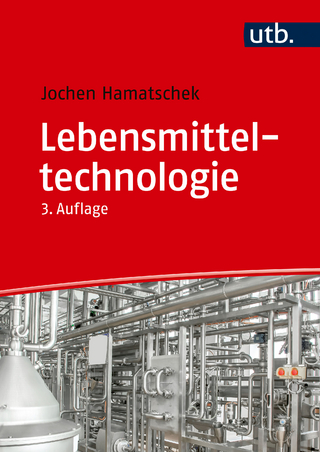
Cholesterol Crystals in Atherosclerosis and Other Related Diseases
Springer International Publishing (Verlag)
978-3-031-41191-5 (ISBN)
Cholesterol Crystals in Atherosclerosis and Other Related Diseases will be of interest to cardiologists as well as individuals in various fields of science including crystallography, basic and clinical imaging, cardiac oncology, and drug discovery.
lt;b> George S. Abela, M.D., M.Sc., M.B.A.Michigan State University
Department of Medicine, CardiologyB208 Clinical Center, East Lansing, MI 48824Phone: 517-353-1754; Fax: 517-353-4978; email: abela@msu.edu
Stefan Mark Nidorf, M.B.B.S., F.R.A.C.P., M.D.CardiologistSir Charles Gairdner Hospital
The Heart and Vascular Research Institute 3/140 Mount Bay RdPerth, Western Australia 6000(61+) 4803000smnidorf@gmaiol.com
George S. Abela is a physician scientist and chief of cardiology at Michigan State University. He has conducted and authored the seminal research describing for the first time the critical role of cholesterol crystals in tissue injury. This was accomplished by demonstrating that cholesterol expands in volume when transformed from a liquid to solid state generating the hypothesis that this expansion in the confined environment of an atherosclerotic plaque can lead to rupture and erosion. Support data comes from demonstration of extensive crystals perforating ruptured plaques only in patients who died with myocardial infarction. Moreover, by modifying the tissue preparation process that avoids ethanol for scanning electron microscopy, he and lab co-workers were able to preserve the crystals from being dissolved by ethanol dehydration, a protocol that had been established centuries earlier. This unraveled the extent and severity of mechanical injury to the arterial wall by sharp tipped cholesterol crystals. He demonstrated that this process is not only present in coronary artery atherosclerotic plaques but also in cardiac valves, various solid cancers, brains from Alzheimer patients and most recently was found by other investigators in diabetic retinopathy. This universal process is a source of inflammation triggered by the transformation of cholesterol as a metastable molecule into a flat crystal. In a collaboration between Dr. Abela and immunologists, they demonstrated the role of cholesterol crystals in triggering inflammation via the NLRP3 inflammasome similar to the mechanism described for uric acid crystals. Overall, atherosclerosis as a crystalloid disease was recognized based on the discoveries made in Dr. Abela's laboratory at Michigan State University.
Stefan Mark Nidorf is a clinical cardiologist practicing in Perth Western Australia affiliated the Heart and Vascular Research Institute at the Perkins Research Institute. His clinical research interest in atherosclerosis led him to initiate the LoDoCo trials of low dose colchicine for the secondary prevention of chronic coronary disease, the rationale of which has been strengthened by an improved understanding of how cholesterol transitions from an essential molecule into a crystalline form that can act to initiate and perpetuate the chronic and acute manifestations of atherosclerosis.
Section 1. Detection of Cholesterol Crystals-Why Was it Missing,- Chapter 1. Historical perspective.- Chapter 2. New techniques.- Section 2: Crystallography-A Molecular Perspective.- Chapter 3. Overview.- Chapter 4. Cholesterol Crystal Formation.- Section 3. Cholesterol Crystals in Atherosclerosis- Atheroma to Atherosclerosis & Beyond.- Chapter 5. Lipidology and Atherosclerosis.- Chapter 6. Studies of CCs in Cell Culture.- Chapter 7. Mechanisms of CC induced Inflammation and atherosclerosis.- Chapter 8. Rheumatology/Vascular biology - intersection of gout and atherosclerosis.- Chapter 9. Potential of Cholesterol Crystals to cause trauma.- Section 4. Cholesterol Crystal Induced Vascular Embolism & End-organ Injury.- Chapter 10. Myocardial Injury.- Chapter 11. Cerebral, Hollenhorst plaques & Amaurosis fugax, Stroke and TIA.- Chapter 12. Muscular.- Chapter 13. Cutaneous.- Chapter 14. Renal injury.- Section 5. Other Cardiac Sites of Cholesterol Crystal injury.- Chapter 15. Cardiac Valve Injury by Cholesterol Crystals.- Chapter 16. Interaction of Cholesterol Crystals and Bacteria Causing Endocarditis.- Chapter 17. Pericardial deposition.- Section 6. Interaction of Cholesterol Crystals with Other Crystalloids.- Chapter 18. Cholesterol Crystals as a nidus for calcification.- Chapter 19. Calcium phosphate crystals as inducers of inflammation.- Chapter 20. Monosodium urate crystals as triggers of inflammation.- Section 7. A Universal Role of Cholesterol Crystals Beyond Cardiac Disease.- Chapter 21. Solid Tumors with crystal induced VEGF.- Chapter 22. Alzheimer's with evidence of cholesterol crystals.- Chapter 23. Apical periodontitis.- Chapter 24. Biliary disease by cholesterol gall stones.- Chapter 25. Ocular retinal injury in diabetic retinopathy.- Section 8. Therapeutic Implications - Targeting Cholesterol Crystal Induced Disease.- Chapter 26. Lipid lowering with Statins.- Chapter 27. Anti-inflammatory Colchicine, canakinumab, Aspirin.- Chapter 28. Future Directions and Developments Cyclodextrin.
| Erscheinungsdatum | 24.11.2023 |
|---|---|
| Reihe/Serie | Contemporary Cardiology |
| Zusatzinfo | XV, 504 p. 155 illus., 148 illus. in color. |
| Verlagsort | Cham |
| Sprache | englisch |
| Maße | 155 x 235 mm |
| Gewicht | 1083 g |
| Themenwelt | Medizin / Pharmazie ► Medizinische Fachgebiete |
| Schlagworte | atherosclerosis • Cholesterol Crystal Formation • Cholesterol Crystals • Cholesterol Crystals in Alzeheimer's • Cholesterol Crystals in Cancer • Cholesterol Crystals in Retinopathy • crystal formation • Crystalloid Diseases • Myocardial Infarction • Plaque rupture • vascular inflammation |
| ISBN-10 | 3-031-41191-9 / 3031411919 |
| ISBN-13 | 978-3-031-41191-5 / 9783031411915 |
| Zustand | Neuware |
| Haben Sie eine Frage zum Produkt? |
aus dem Bereich


